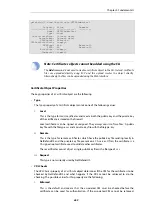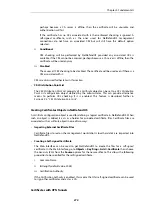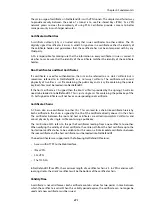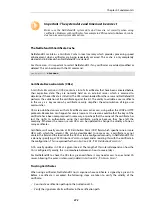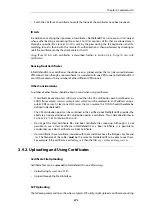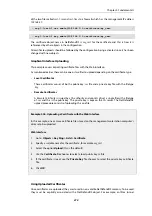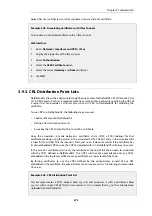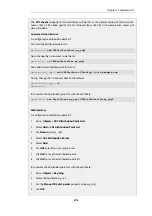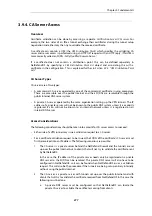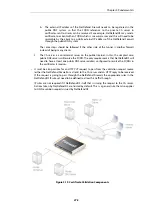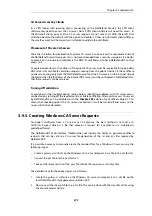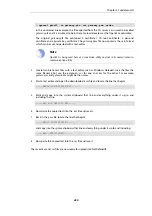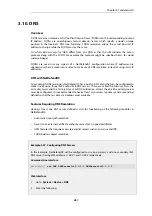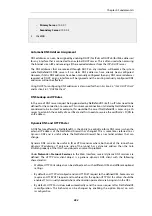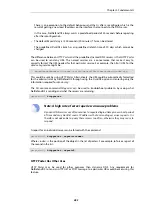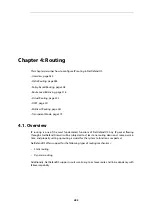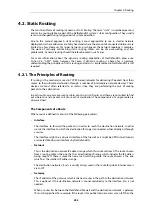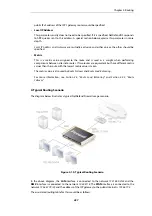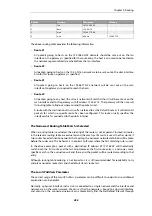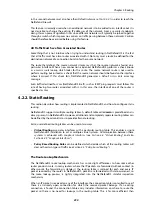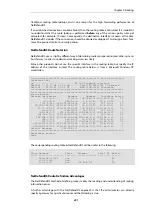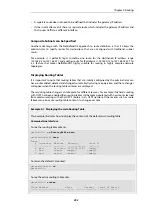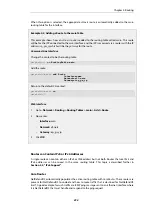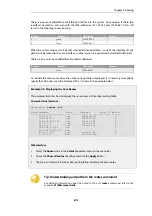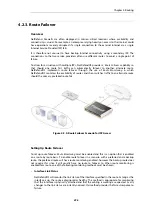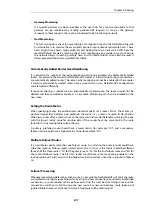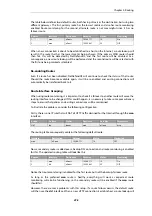
There is one exception to the default behaviour and that is after a reconfigure which is the
result of getting a new local IP address on the interface that connects to the DNS server.
In this case, NetDefendOS always waits a predefined period of 20 seconds before reposting
after the reconfiguration.
•
The default
Repost Delay
is 1200 seconds (20 minutes). This can be altered.
The predefined
DynDNS
client has an predefined refetch time of 30 days which cannot be
changed.
The difference between
HTTP Poster
and the predefined named DNS servers is that
HTTP Poster
can be used to send any URL. The named services are a convenience that make it easy to
correctly format the URL needed for that particular service. For example, the
http://
URL for the
dyndns.org
service might be:
myuid:[email protected]/nic/update?hostname=mydns.dyndns.org
This could be sent by using
HTTP Poster
. Alternatively, the URL could be automatically formatted
for the administrator by NetDefendOS through using the
DynDNS
option and entering only the
information required for
dyndns.org
.
The CLI console command
httpposter
can be used to troubleshoot problems by seeing what
NetDefendOS is sending and what the servers are returning:
gw-world:/> httpposter
Note: A high rate of server queries can cause problems
Dynamic DNS services are often sensitive to repeated login attempts over short periods
of time and may blacklist source IP addresses that are sending excessive requests. It is
therefore not advisable to query these servers too often, otherwise they may cease to
respond.
A repost for an individual server can be forced with the command:
gw-world:/> httpposter -repost=<index>
Where
<index>
is the position of the object in the list of posters. For example, to force a report of
the second in the list:
gw-world:/> httpposter -repost=2
HTTP Poster Has Other Uses
HTTP Poster
may be used for other purposes than dynamic DNS. Any requirement for
NetDefendOS to send an HTTP
GET
or
POST
message to a particular URL could be met using this
feature.
Chapter 3: Fundamentals
283
Summary of Contents for NetDefendOS
Page 30: ...Figure 1 3 Packet Flow Schematic Part III Chapter 1 NetDefendOS Overview 30 ...
Page 32: ...Chapter 1 NetDefendOS Overview 32 ...
Page 144: ...Chapter 2 Management and Maintenance 144 ...
Page 284: ...Chapter 3 Fundamentals 284 ...
Page 392: ...Chapter 4 Routing 392 ...
Page 419: ... Host 2001 DB8 1 MAC 00 90 12 13 14 15 5 Click OK Chapter 5 DHCP Services 419 ...
Page 420: ...Chapter 5 DHCP Services 420 ...
Page 573: ...Chapter 6 Security Mechanisms 573 ...
Page 607: ...Chapter 7 Address Translation 607 ...
Page 666: ...Chapter 8 User Authentication 666 ...
Page 775: ...Chapter 9 VPN 775 ...
Page 819: ...Chapter 10 Traffic Management 819 ...
Page 842: ...Chapter 11 High Availability 842 ...
Page 866: ...Default Enabled Chapter 13 Advanced Settings 866 ...
Page 879: ...Chapter 13 Advanced Settings 879 ...

